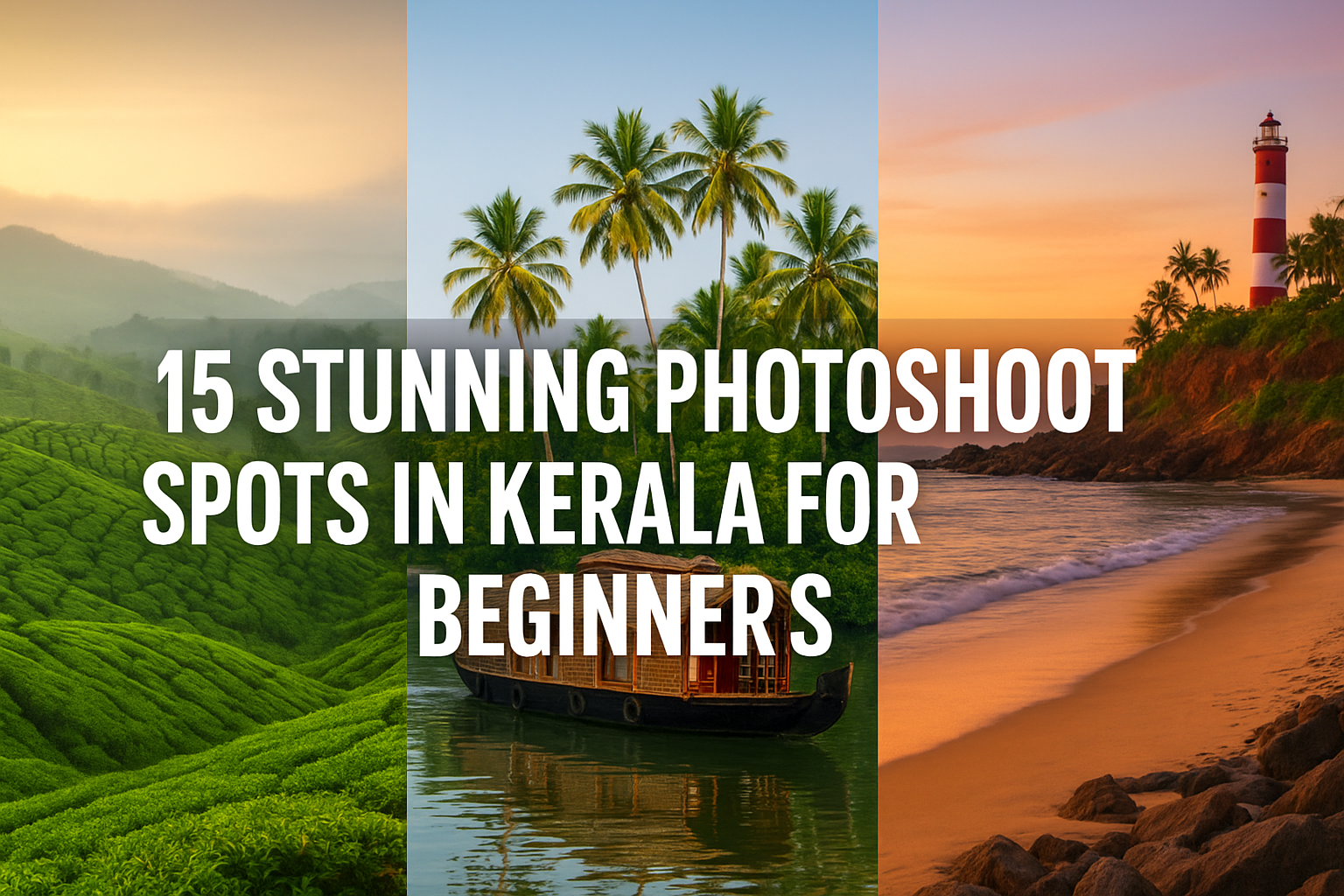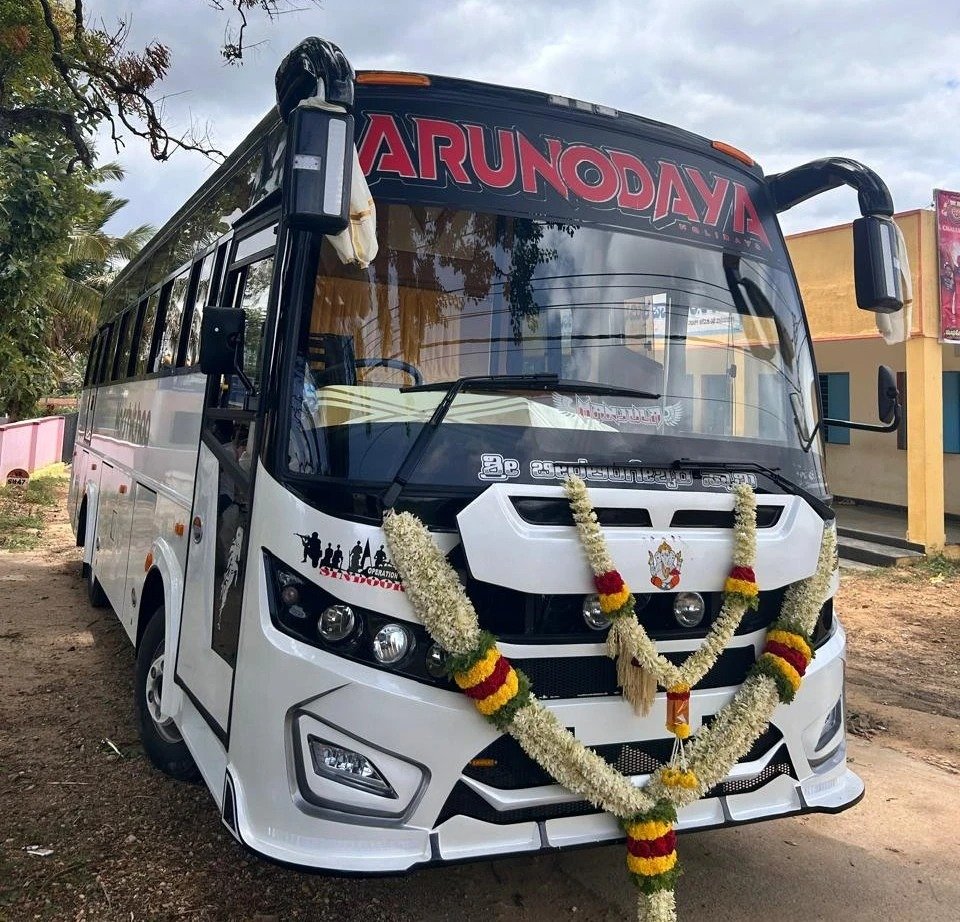Introduction to Kerala Cuisine
Kerala, a state located on the southwestern coast of India, is renowned for its rich and diverse culinary heritage. The cuisine of Kerala is a delightful amalgamation of various cultural influences, including those from the Portuguese, Dutch, and Arab traders who visited the region over centuries. These interactions have left an indelible mark on the food traditions, creating a unique gastronomic landscape that is both vibrant and flavorful.
One of the fundamental elements of Kerala cuisine is the extensive use of spices. Kerala is often referred to as the “Spice Garden of India,” and for good reason. Spices such as black pepper, cardamom, cloves, and cinnamon are integral to the flavor profiles of many dishes. The use of these spices not only adds depth and complexity to the food but also reflects the historical trading significance of the region.
Coconut is another cornerstone of Kerala’s culinary repertoire. Whether it is coconut oil used for cooking, grated coconut added to dishes, or coconut milk that forms the base of many curries, this tropical fruit is indispensable in Kerala’s kitchens. The ubiquitous presence of coconut in meals not only highlights the state’s geographical abundance but also imparts a distinct richness and texture to the food.
Rice is the staple food in Kerala and forms the foundation of most meals. From the fluffy white rice served with curries to the fermented rice batter used for making traditional breakfast items like appam and dosa, rice is omnipresent in the daily diet. The importance of rice in Kerala’s cuisine underscores the agrarian lifestyle of the region, where paddy fields dot the landscape.
The interplay of these elements—spices, coconut, and rice—creates a culinary tapestry that is uniquely Kerala. As we delve deeper into the famous foods of this coastal state, it becomes evident how these ingredients work harmoniously to produce dishes that are not only delicious but also reflective of the region’s rich cultural history.
Appam with Stew
Appam with stew is a quintessential dish that epitomizes the culinary heritage of Kerala. Appam, a type of pancake, is made from a fermented batter consisting of rice and coconut milk. This fermentation process, which typically takes several hours, results in a light, airy pancake with a soft, spongy center and a delicate, lace-like edge. The appam is traditionally cooked in a special pan called an “appachatti,” contributing to its unique texture and appearance.
The stew that accompanies appam is a rich, flavorful dish that can be prepared with either vegetables or meat. The base of the stew is coconut milk, which imparts a creamy consistency and a subtle sweetness. A blend of spices, including cinnamon, cloves, cardamom, and curry leaves, infuses the stew with a distinctive aroma and taste. The inclusion of ginger, garlic, and green chilies adds a layer of complexity, balancing the sweetness of the coconut milk with a hint of heat.
In Kerala’s breakfast culture, appam with stew holds a place of prominence. It is often served during special occasions and family gatherings, symbolizing the warmth and hospitality of the region. The dish showcases the harmonious blend of flavors that is characteristic of Kerala cuisine, where the mildness of the appam perfectly complements the spiciness of the stew.
Variations of appam with stew can be found across different regions in Kerala. In some areas, the stew may be prepared with chicken or lamb, while in others, a vegetarian version featuring potatoes, carrots, and peas is more common. These regional differences highlight the versatility of the dish and its ability to adapt to local tastes and preferences.
Overall, appam with stew is a delightful representation of Kerala’s culinary traditions. Its unique preparation method, combined with the rich, aromatic stew, makes it a beloved dish that continues to be cherished by locals and visitors alike.
Kerala Sadya
Kerala Sadya is an elaborate feast that epitomizes the culinary richness of Kerala. Traditionally served on a banana leaf, Sadya is a multi-course meal that is a staple during festivals, weddings, and other significant celebrations. The meal is vegetarian, comprising a harmonious blend of flavors and textures, showcasing the culinary expertise and cultural heritage of the region.
The foundation of a Sadya is rice, served with a variety of accompaniments. One of the most prominent dishes is sambar, a lentil-based vegetable stew seasoned with tamarind and an array of spices. Another essential component is avial, a mixed vegetable curry cooked with coconut and yogurt, offering a unique blend of creamy and tangy flavors. Thoran, a dry vegetable dish usually made with cabbage, beans, or carrots, is tempered with mustard seeds, curry leaves, and grated coconut, providing a delightful crunch.
In addition to these staples, a traditional Sadya includes a variety of pickles, such as mango and lime, adding a tangy zest to the meal. Pachadi, a sweet and sour yogurt-based dish, and kichadi, a cucumber and yogurt side, both contribute to the diverse flavor profile of the feast. The meal is further elevated with the inclusion of crispy pappadams and banana chips, providing a satisfying contrast in texture.
No Sadya is complete without its array of payasams, sweet puddings made from rice, lentils, or vermicelli, cooked in milk or coconut milk and sweetened with jaggery or sugar. Each payasam has its own unique flavor and consistency, making it a fitting conclusion to the sumptuous meal.
The preparation of a Kerala Sadya is an art form, requiring meticulous planning and a deep understanding of traditional recipes. It is a communal activity, often involving several family members or professional cooks, especially during large gatherings. The cultural significance of Sadya extends beyond its culinary aspects, as it embodies the spirit of hospitality and the joy of sharing a meal with loved ones.
Puttu and Kadala Curry
Puttu, a traditional breakfast delicacy from Kerala, is an epitome of simplicity and nutrition. This dish is made by steaming ground rice flour, which is meticulously layered with grated coconut inside cylindrical molds. The result is a soft, crumbly, and fragrant cylindrical cake that forms the base of this beloved meal. Puttu is typically paired with Kadala Curry, a robust and savory curry made from black chickpeas, also known as kadala. This pairing is a quintessential part of Kerala’s culinary heritage, offering a delightful blend of textures and flavors.
As a breakfast dish, Puttu and Kadala Curry hold a special place in the hearts of Keralites. The mild sweetness of the coconut complements the rich, earthy taste of the black chickpeas, creating a balanced dish that is both satisfying and nutritious. Black chickpeas are a powerhouse of protein, fiber, and essential minerals, making Kadala Curry not only delicious but also highly nutritious. When combined with the carb-rich Puttu, this meal provides a wholesome start to the day that sustains energy levels and supports overall health.
Beyond its traditional form, Puttu has versatile variations that cater to diverse tastes and nutritional needs. Ragi Puttu, made from finger millet flour, is a popular alternative that is rich in calcium and iron, making it an excellent choice for those looking to boost their nutritional intake. Wheat Puttu, another variant, offers a higher fiber content and a different taste profile, appealing to health-conscious individuals and those seeking variety in their diet.
Whether in its classic form or one of its many variations, Puttu remains a beloved staple in Kerala cuisine. Its combination with Kadala Curry exemplifies the rich culinary traditions of the region, delivering a meal that is both nourishing and deeply satisfying.
Malabar Parotta and Beef Fry
One of the most celebrated culinary delights from the Malabar region of Kerala is the Malabar Parotta paired with Beef Fry. This combination is a staple in Kerala’s street food culture and has garnered immense popularity for its unique flavors and textures.
The Malabar Parotta, also known as Kerala Parotta, is a flaky, layered bread that stands out due to its intricate preparation method. The process begins with a simple dough made from flour, water, and a pinch of salt. This dough is then kneaded thoroughly until it reaches a soft, elastic consistency. The magic of the Parotta lies in its distinctive layers, created by stretching the dough into thin sheets, folding it repeatedly, and finally rolling it into a spiral. This technique, often referred to as the “stretch and fold” method, ensures that the Parotta, once cooked, is flaky and crisp on the outside while remaining soft and chewy inside.
Complementing the Malabar Parotta is the spicy and succulent Beef Fry. The preparation of this dish starts with marinating beef pieces in a blend of spices, including turmeric, red chili powder, coriander, and garam masala, along with ginger, garlic, and a touch of vinegar or lemon juice. This marination not only infuses the meat with robust flavors but also tenderizes it. The marinated beef is then fried with curry leaves, green chilies, and onions until it achieves a rich, dark color and a perfect balance of spice and heat.
The combination of Malabar Parotta and Beef Fry is emblematic of the Malabar region’s culinary heritage. Whether enjoyed at a bustling street food stall or a traditional Kerala restaurant, this pairing offers a gastronomic experience that reflects the rich cultural tapestry of Kerala. The flaky layers of the Parotta and the bold, spicy flavors of the Beef Fry make it a favorite among locals and visitors alike, cementing its place in the heart of Kerala’s vibrant food scene.
Fish Molee
Fish Molee, also known as Fish Moolie, is a quintessential dish in Kerala’s culinary repertoire. This mild and creamy fish curry is characterized by its rich coconut milk base, which is delicately infused with turmeric, green chilies, and a medley of aromatic spices. The dish’s origins can be traced back to the Portuguese influence on Kerala’s cuisine, demonstrating a fascinating fusion of local ingredients with European culinary techniques.
The Portuguese, who arrived on the Malabar Coast in the 15th century, introduced a variety of cooking methods and ingredients that were seamlessly integrated into the local gastronomy. Fish Molee is a prime example of this culinary amalgamation, where the use of coconut milk and local spices creates a harmonious balance of flavors. Turmeric lends the dish its vibrant golden hue, while green chilies provide a subtle heat that complements the creamy texture of the coconut milk.
Commonly used fish varieties for preparing Fish Molee include seer fish (kingfish), pomfret, and mackerel. These types of fish are prized for their firm texture and ability to absorb the rich flavors of the curry. The fish is typically marinated with a blend of turmeric, salt, and lemon juice before being gently cooked in the coconut milk gravy. This ensures that the fish remains tender and flavorful.
Fish Molee is often served with Appam, a type of fermented rice pancake with a soft, spongy center and crispy edges, which perfectly complements the creamy curry. Alternatively, it can be enjoyed with steamed rice, which helps to balance the richness of the dish. This combination not only enhances the dining experience but also showcases the versatility of Kerala’s cuisine, where simple ingredients are transformed into delectable dishes that reflect the region’s diverse cultural heritage.
Banana Chips and Other Snacks
Kerala, often referred to as “God’s Own Country,” is renowned for its diverse and delectable culinary offerings. Among the myriad of snacks that form an integral part of Kerala’s food culture, banana chips hold a special place. These crispy, golden slices are made from a unique variety of bananas known as Nendran bananas, which are indigenous to the region. The bananas are peeled, thinly sliced, and deep-fried in coconut oil until they achieve a perfect crunch. A pinch of salt is often added to enhance their natural flavor, resulting in a snack that is both simple and irresistible.
Apart from the ubiquitous banana chips, Kerala boasts a plethora of other traditional snacks that are equally cherished. Pazham Pori, or banana fritters, are another popular treat made from ripe bananas coated in a sweet batter and deep-fried to perfection. These fritters, with their crispy exterior and soft, sweet interior, are a favorite among locals and visitors alike, particularly when paired with a cup of piping hot tea.
Achappam, also known as rose cookies, is a traditional snack that captures the essence of Kerala’s culinary artistry. Made from a batter of rice flour, coconut milk, and sugar, these cookies are deep-fried using intricate moulds that give them their distinctive shape. Achappam are not only delicious but also visually appealing, making them a staple during festive occasions and celebrations.
Another beloved snack is Unniyappam, sweet rice cakes made from a batter of rice flour, jaggery, banana, and coconut. These small, round cakes are deep-fried until they turn golden brown, resulting in a snack that is both chewy and flavorful. Unniyappam are often enjoyed during tea-time, reflecting the region’s rich tradition of accompanying snacks with tea.
In Kerala, tea-time is more than just a break; it is a cherished ritual that brings people together. The variety of snacks available, each with its unique taste and texture, plays a significant role in this cultural practice. Whether it’s the crispiness of banana chips, the sweetness of Pazham Pori, the intricate beauty of Achappam, or the delightful chewiness of Unniyappam, these snacks are a testament to Kerala’s rich culinary heritage and its deep-rooted traditions.
Kerala Desserts: Payasam and Beyond
Kerala is renowned for its rich culinary heritage, and its desserts are no exception. Among the myriad of sweets, Payasam holds a special place, embodying the essence of Kerala’s traditional cuisine. Payasam is a sweet pudding that comes in various forms, typically made with rice, milk, and jaggery. It is a staple during festivals and celebrations, symbolizing joy and prosperity.
Ada Pradhaman is one of the most cherished variations of Payasam. This luscious dessert is made with rice flakes (ada), jaggery, and coconut milk, creating a rich and flavorful experience. The use of coconut milk, a hallmark of Kerala’s cuisine, adds an unparalleled depth of flavor and creaminess. Jaggery imparts a distinct sweetness that sets Ada Pradhaman apart from other desserts.
Another popular variant is Palada Payasam, which uses rice ada, milk, and sugar. Unlike Ada Pradhaman, Palada Payasam is lighter and creamier, often garnished with fried cashews and raisins to enhance its texture and taste. The slow cooking process allows the rice flakes to absorb the milk fully, resulting in a velvety consistency that melts in the mouth.
Coconut, jaggery, and cardamom are integral to Kerala’s dessert repertoire. These ingredients are not only used in Payasam but also in a variety of other traditional sweets. For instance, Unniyappam is a small, deep-fried snack made with rice flour, jaggery, banana, and cardamom, offering a delightful combination of flavors and textures. Another example is Vattayappam, a steamed rice cake sweetened with jaggery and flavored with cardamom, often enjoyed during festive occasions.
The significance of these desserts extends beyond their delectable taste. They are an integral part of Kerala’s cultural and religious ceremonies, often prepared as offerings in temples and served during Onam, Vishu, and other celebrations. The meticulous preparation and the use of locally sourced ingredients reflect the region’s deep-rooted culinary traditions and the importance of food in community bonding and rituals.



